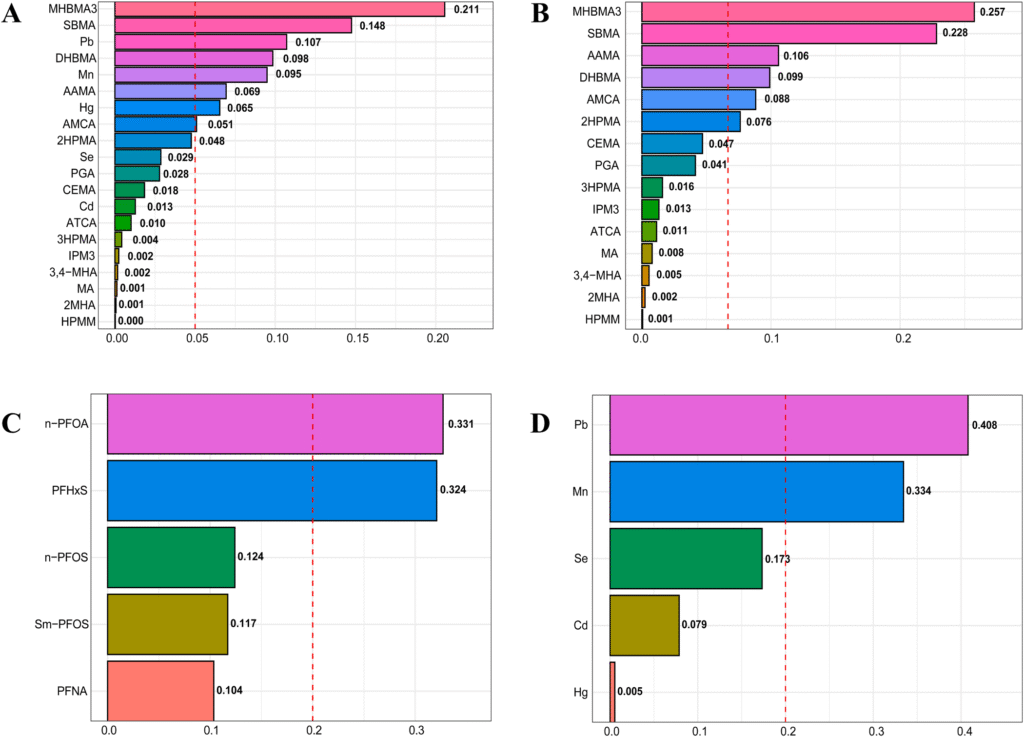Review
Association between endocrine disrupting chemicals exposure and diabetic kidney disease in adults
Xinru Li a,1, Xiaoang Ye b,1 c, Luhuan Xu , Hongyu Chen d,*
a Hangzhou Clinical Medical College of Zhejiang Chinese Medical University, Hangzhou, Zhejiang, PR China
b The Second Clinical Medical College of Zhejiang Chinese Medical University, Hangzhou, Zhejiang, PR China
c Department of Nephrology, Lishui People’s Hospital, Lishui, Zhejiang, PR China
d Department of Nephrology, Hangzhou TCM Hospital Affiliated to Zhejiang Chinese Medical University, Hangzhou, Zhejiang, PR China
ARTICLE INFO
Edited by Dr G Liu
Keywords:
Endocrine disrupting chemicals
Diabetic kidney disease
Volatile organic compounds
Metals
Perfluoroalkyl and polyfluoroalkyl substances Globulin
Highlights
- The findings suggest an association between individual or co-exposure to EDC metabolites and DKD, providing valid evidence for DKD prevention from the perspective of EDCs exposure.
ABSTRACT
Background: Diabetic kidney disease (DKD) is a global public health concern. Environmental factors are increasingly recognized as significant risk factors that cannot be overlooked, and certain environmental pol- lutants exhibit endocrine-disrupting properties. Previous research on the association between endocrine- disrupting chemicals (EDCs) and DKD has been notably limited.
Methods: This study investigated the association between exposure to 25 EDC metabolites and DKD in 1421 U.S. adults from the 2015–2018 National Health and Nutrition Examination Survey (NHANES). We used logistic regression, restricted cubic spline regression, weighted quantile sum (WQS) regression, and bayesian kernel machine regression (BKMR) models to assess the association between individual and co-exposure to multiple EDCs and DKD. Subgroup analyses and interaction tests were performed to investigate whether this association was stable across the population. Additionally, mediation analysis was used to explore the mediating role of serum globulins in the association between Pb exposure and DKD.
Results: In logistic regression models, N-Acetyl-S-(2-hydroxypropyl)-L-cysteine (2HPMA), N-Acetyl-S-(4-hydroxy- 2-butenyl)-L-cysteine (MHBMA3), Phenylglyoxylic acid (PGA), and lead (Pb) were significantly positively associated with diabetes. Restricted cubic spline (RCS) analyses also revealed significant non-linear positive associations between 2HPMA, MHBMA3, and DKD. Perfluorohexane sulfonic acid (PFHxS), n-perfluorooctanoic acid (n-PFOA), n-perfluorooctane sulfonic acid (n-PFOS), and Perfluoromethylheptane sulfonic acid isomers (Sm- PFOS) were significantly negatively associated with DKD. Furthermore, co-exposure to metals and metalloid was positively associated with DKD in both the WQS regression and the BKMR models, with Pb as the primary contributing factor. Mediation analysis showed that globulin mediated the association between Pb exposure and DKD, with a mediation proportion of 7.25 % (P = 0.046). Co-exposure to perfluoroalkyl and polyfluoroalkyl substances (PFASs) was negatively correlated with DKD, and subgroup analyses revealed that this correlation was more pronounced in the obese group (BMI ≥30 kg/m²). The BKMR analysis revealed potential interactions among various chemical compounds, such as N-Acetyl-S-(2-hydroxypropyl)-L-cysteine (2HPMA), 2-Methylhippu- ric acid (2MHA), N-Acetyl-S-(4-hydroxy-2-methyl-2-butenyl)-L-cysteine (IPM3), mercury (Hg), and cadmium (Cd), in a model simulating co-exposure to metals and metalloid, as well as to volatile organic compound me- tabolites (mVOCs).
Conclusion: The findings suggest an association between individual or co-exposure to EDC metabolites and DKD, providing valid evidence for DKD prevention from the perspective of EDCs exposure. However, more prospective studies are needed to elucidate the potential mechanisms underlying these findings.
Article
Co-exposure to perfluoroalkyl and polyfluoroalkyl substances (PFASs) was negatively correlated with DKD, and subgroup analyses revealed that this correlation was more pronounced in the obese group (BMI ≥30 kg/m²). The BKMR analysis revealed potential interactions among various chemical compounds, such as N-Acetyl-S-(2-hydroxypropyl)-L-cysteine (2HPMA), 2-Methylhippu- ric acid (2MHA), N-Acetyl-S-(4-hydroxy-2-methyl-2-butenyl)-L-cysteine (IPM3), mercury (Hg), and cadmium (Cd), in a model simulating co-exposure to metals and metalloid, as well as to volatile organic compound me- tabolites (mVOCs).
The findings suggest an association between individual or co-exposure to EDC metabolites and DKD, providing valid evidence for DKD prevention from the perspective of EDCs exposure. However, more prospective studies are needed to elucidate the potential mechanisms underlying these findings.
Available online 25 July 2025
0147-6513/© 2025 The Authors. Published by Elsevier Inc. This is an open access article under the CC BY license (http://creativecommons.org/licenses/by/4.0/).

